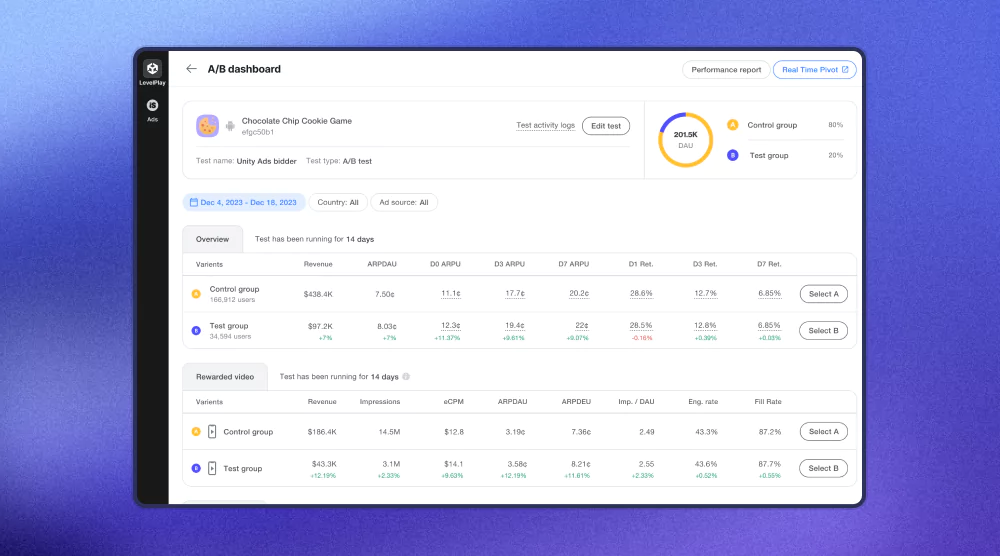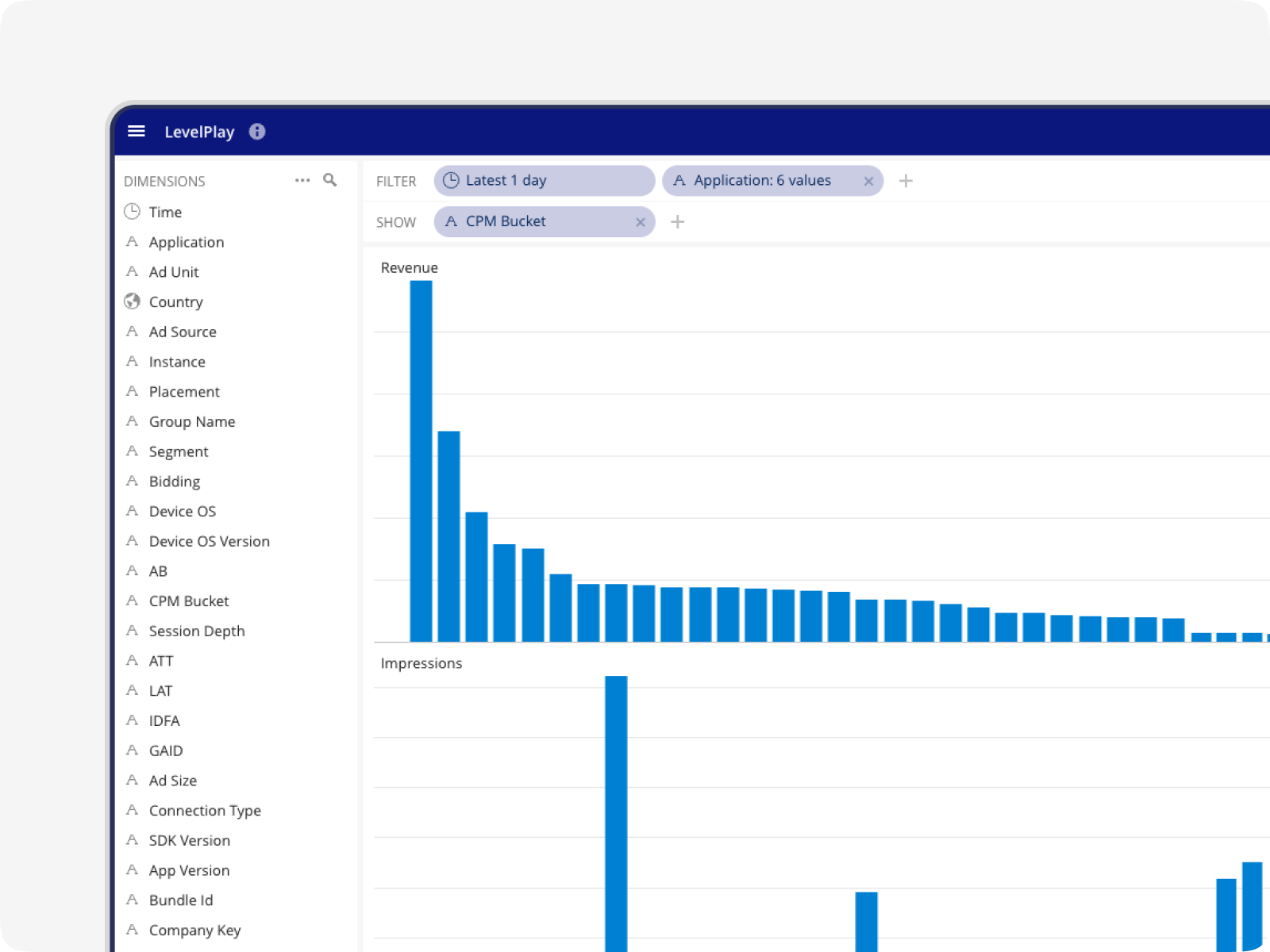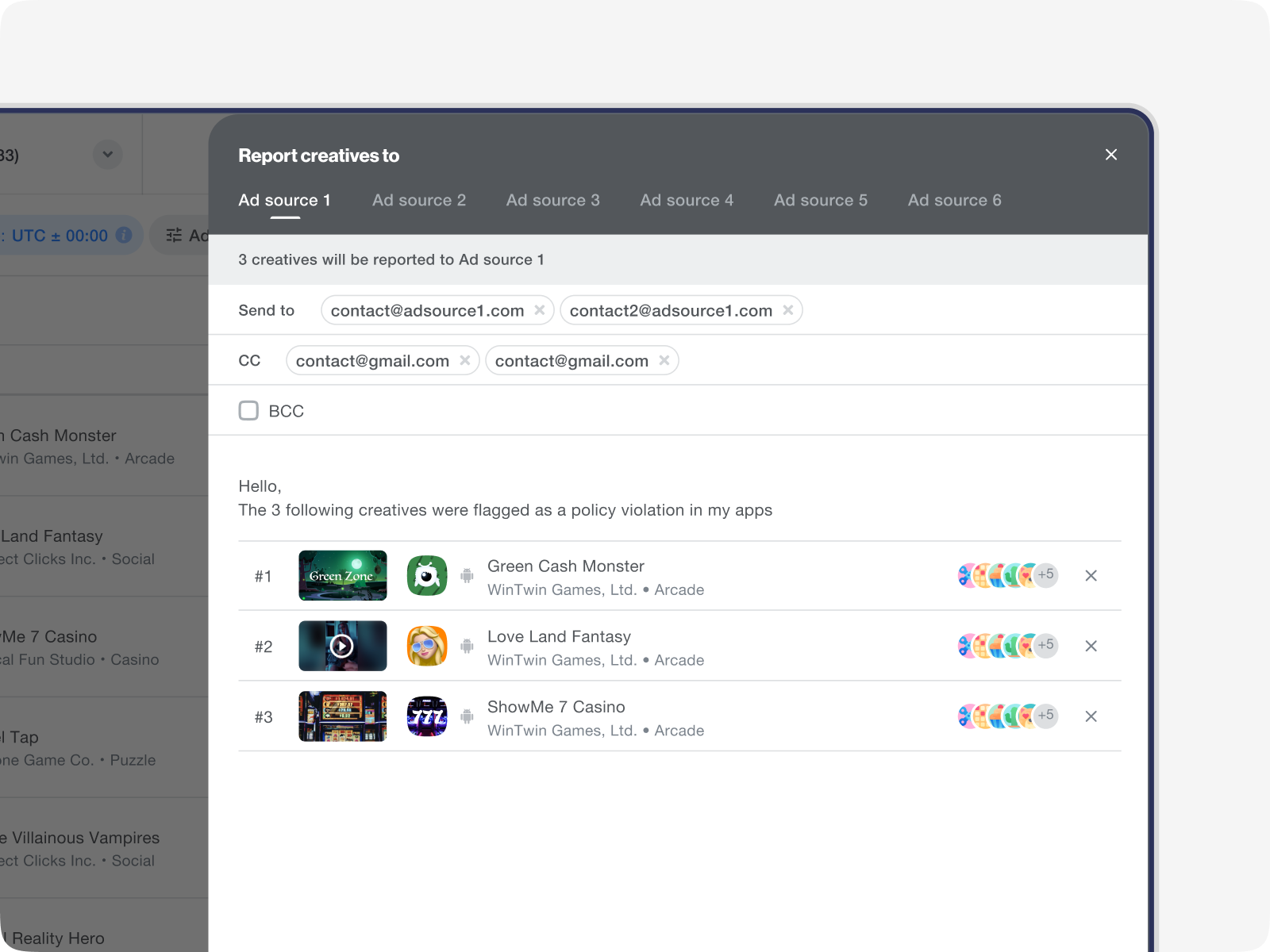Compared to traditional waterfall instances, in-app bidding can be advantageous. However one concern raised within the context of in-app bidding is the loss of manual tweaks to fill ad requests. Given the automation with in-app bidding, it can raise concerns about losing control and transparency.
To help mitigate concerns around moving to in-app bidding, there are tools and services that help you maintain transparency and control. This article looks at three key pillars to addressing those concerns: testing, granular reporting, and understanding your ad experiences.
Maintain control through robust testing
In the automated in-app bidding environment, you need to be able to test, learn, and adapt ad strategies to see long-term success. A/B testing gives you greater understanding of your monetization metrics, from average revenue per user (ARPU) to retention. Knowledge is power, and A/B testing is the only way you can truly measure the impact of different in-app bidding strategies. Running an A/B test can give you the answers you need to feel secure in this new landscape.
Certain KPIs you can look at to help determine success could be: overall average revenue per daily active user (ARPDAU), ARPU growth, increase in the number of impressions per user, and fewer managed instances. Tracking ARPDAU before and after you implement bidding measures overall revenue, not just performance by network.
In addition, A/B testing gives you granular insights into your strategy so that you can continue to optimize and build a dynamic marketplace in this new ecosystem. Unity LevelPlay has a robust A/B testing solution that allows you to test a wide range of variables including bidding vs. traditional waterfalls, mediation groups, new networks, instance pricing, and ad strategy. Among LevelPlay customers who A/B tested integrating the Unity Ads bidder, the test group won in 78% of the cases, and those who applied the changes saw ad ARPDAU increases of up to 7%.

Overall, A/B testing brings you peace of mind when transitioning to an in-app bidding world, confirming the switch is right for your app. After switching, a robust A/B testing tool continues to give you control over the bidding environment, allowing you to test and implement new optimizations.
Gain transparency with deeper reporting
Having transparency into your ad performance can help you make informed changes to accelerate your app’s growth. In-app bidding is an automated setup which will run based on general best practices, so the ability to make real-time, data-informed choices for your app is incredibly valuable, giving you a leg up on competitors.
Features such as real-time pivot from LevelPlay provide granular visibility into monetization performance and the ability to make instant changes. Publishers can detect performance changes as they occur, compare revenue over time, and analyze network performance. Trackable KPIs such as eCPM buckets, ad latency, impressions, DAU, DEU, and sessions per DEU can help publishers understand not only ad performance, but user engagement patterns as well. These metrics can be sliced and diced by country, time, ad source, and more to give a deeper level of insight to determine what, if any, changes are needed.

“In 2024, Unity LevelPlay remains focused on giving developers more control and transparency through granular analytics that provide actionable data in real time, to help optimize their monetization strategies and maintain user experience to drive higher retention and ARPU,” Omer Adato, Senior Director of Product Management at Unity says.
Experience ads as your users do
Another concern raised is that since in-app bidding operates in real time and your ad space can be filled quite quickly without you even knowing, having transparency into the ads being shown in your app is key to ensuring you’re selling ad space to advertisers that won’t disrupt the user experience. After all, seeing a frustrating ad or having a glitchy experience can quickly cause users to churn. However you can gain insight that supports both brand and safety as well as revenue.
Gaining oversight of your users' ad experiences supports not only branding and safety, but revenue as well. By blocking troublesome ads initially, you cultivate a healthier ecosystem until networks address issues. Once resolved, lifting blocks on revenue sources restores income while maintaining a quality user experience. Overall, targeted blocking and unblocking empowers monetization through cooperation on ad quality.

Ad Quality from LevelPlay is designed to give full transparency into your ad experience. You can access a gallery of all the ads shown in your app, ad analysis, and user journeys. Publishers can also define a set of triggers in Ad Quality, called custom notifications. This feature proactively alerts publishers if a specific creative, advertiser, content rating, or buggy ad appears in your app, so that you can immediately respond to any critical needs.
While in-app bidding is running automatically in the background, a feature like Ad Quality gives you much needed transparency into how your ad space is being filled.
“Ad Quality helps us ensure that ad content in our apps is appropriate for our audiences. We get notified when titles with high content ratings are displayed, so we know when to reach out to the networks. This visibility is key for us.”
-- Stefano Accossato, Head of UA & Ad Monetization at TutoTOONS
In an in-app bidding environment, working with a mediation platform that has the right features to maintain control and transparency over your ad strategy can help make the transition from traditional waterfalls easier and help create a top performing ad strategy.
Learn more about Unity LevelPlay and how you can get started with A/B testing, Real time pivot, and Ad Quality.



